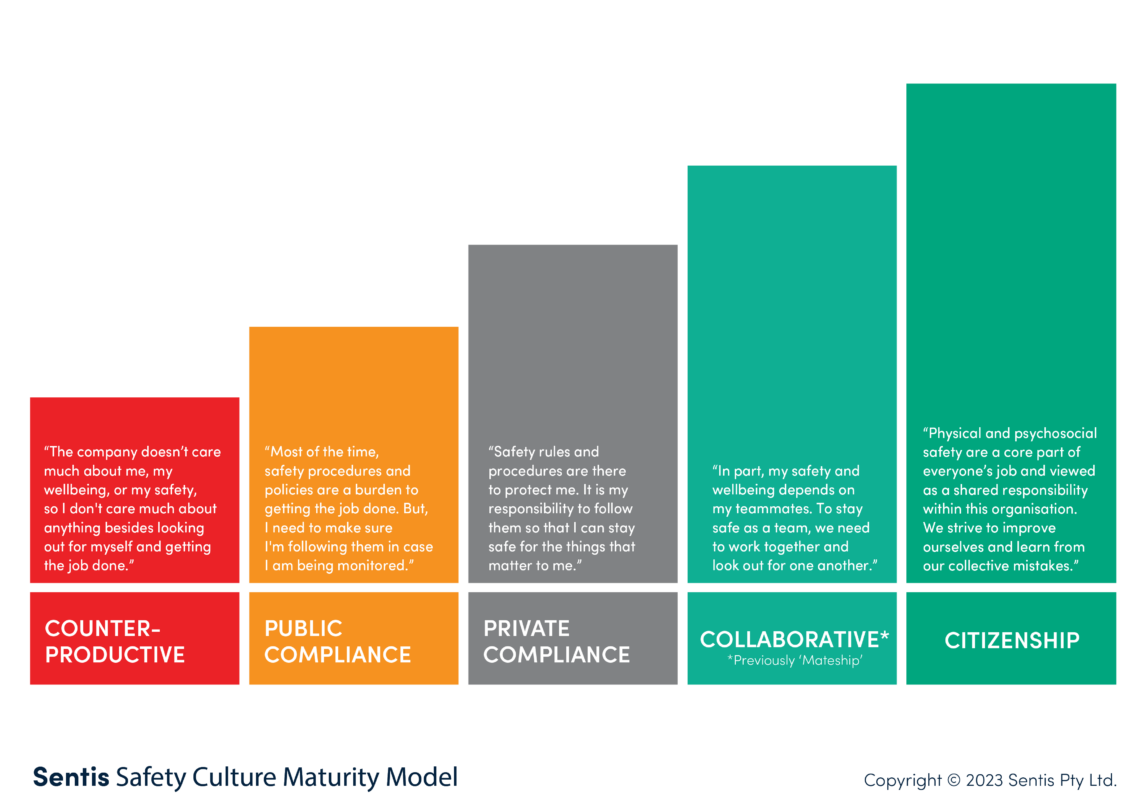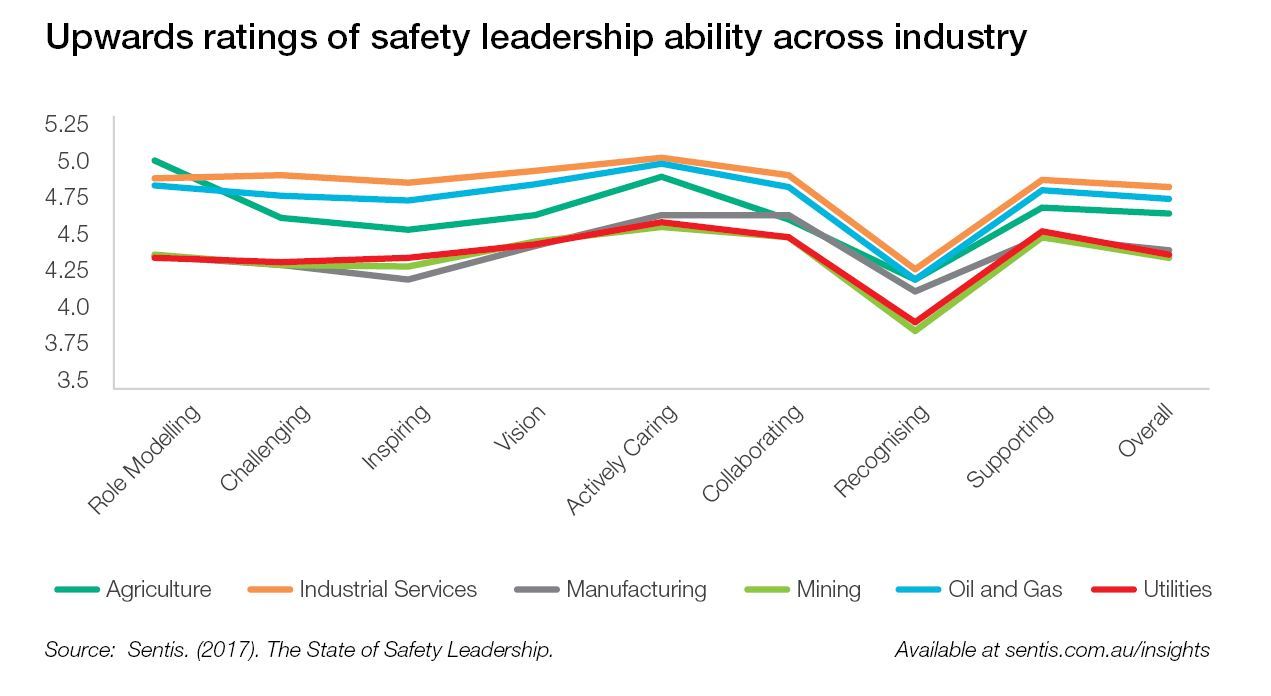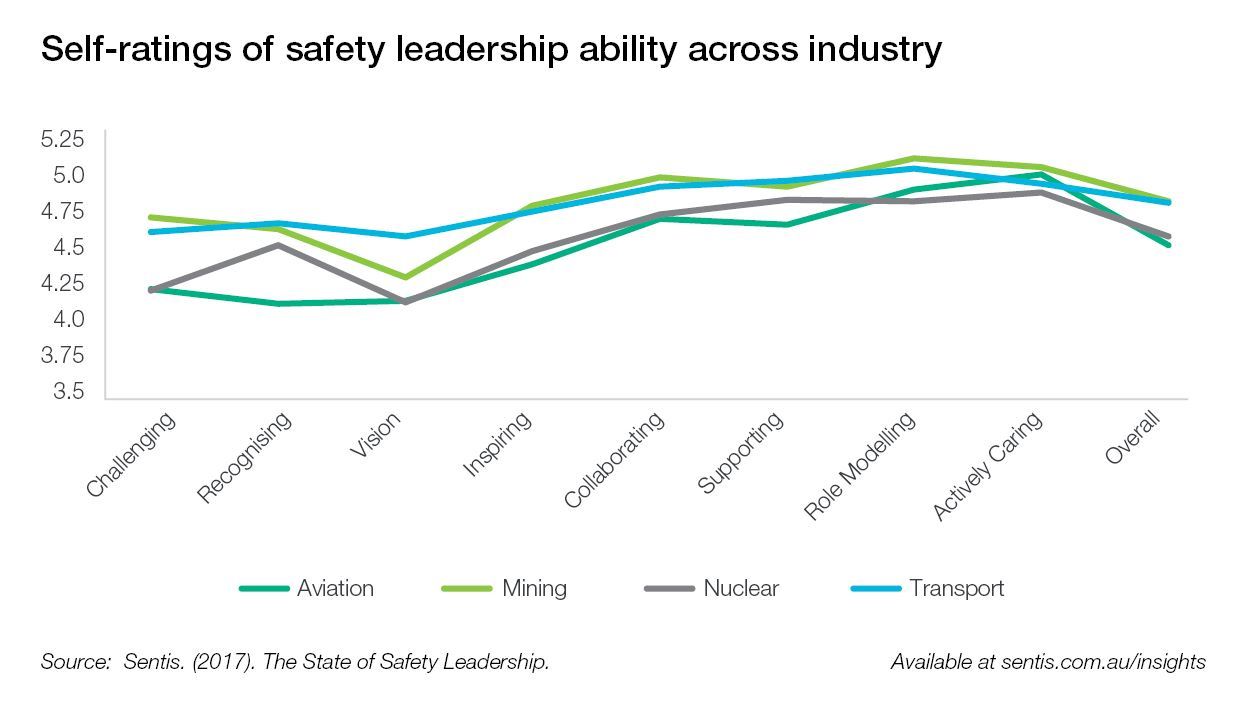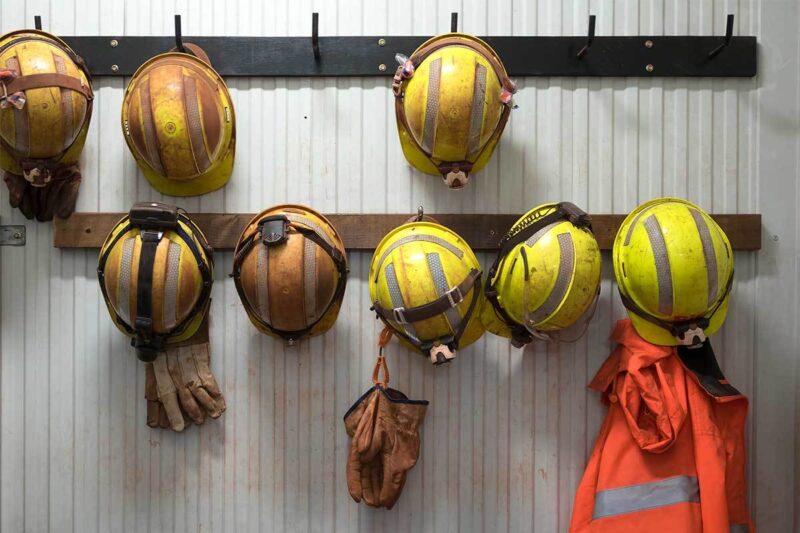Over the last few decades, the mining industry has played an integral role in Australia’s economic growth. Especially during the period that we refer to as “The Mining Boom”, this expansive industry has helped bolster our economy and is fuelled by the collective efforts of frontline workers in mining sites across the country. But yet, despite the positive production outcomes that their daily efforts are driving, a look into the safety culture within these sites makes it clear that this production is happening at the expense of safety.
You see, our research has indicated that as an industry, mining has a lower than average safety culture maturity with 89% of organisational sites operating within a negative safety culture. Beyond that, the amount of sites that have a Counterproductive safety culture sits at a staggering 18%—more than twice the average of 8%. Especially in these Counterproductive sites, workers are being placed at a substantially higher risk of being in a major safety incident—or worse.

The ramifications of this become clear when you take into account that Queensland had its highest mining fatality rate in over 20 years last year with six fatalities in a 12-month period. Not only did this lead to the government declaring an industry-wide safety crisis—but it also shined a spotlight on the urgent need for rapid transformation across the industry.
So to ensure that workers get to go home safely at the end of every day, the Queensland government commissioned a detailed review into the mining fatalities and serious incidents that occurred over the last 19 years to get clear on exactly what needs to be done to protect our people.
A look behind the curtain of the mining safety crisis
One of the largest issues hindering the progression of safety in mining is a deep-rooted belief that by its very nature, mining is “risky”. The problem with this mindset is that it breeds a sense of complacency towards safety as it frames preventable safety incidents as being unfortunate but inevitable by-products of working in the industry.
In turn, this robs organisations and individuals from the opportunity to prevent minor hazards from turning into major safety incidents or fatalities. With that in mind, let’s take a look at some of the key findings from the Government’s mining safety review.
1. There’s a recurring mining fatality cycle
After analysing the last 19 ½ years of safety incidents, it became clear that the mining industry experiences a recurring 5-year cycle of fatalities, with an average of 12 fatalities per cycle. Without significant changes to the way that they operate, this trend is set to repeat itself indefinitely for the foreseeable future.
Within each cycle, there’s also a trend for how the fatalities are distributed. Instead of having a randomised pattern of distribution, each cycle has periods with a significant number of fatalities, followed by periods with little to none. This distribution pattern indicates that when it comes to safety, the industry goes through periods of increasing and decreasing vigilance. When a series of fatalities occur, workers become more vigilant and aware of their safety behaviours. In turn, this leads to a sudden drop in fatalities for the proceeding time period.
However, as time passes since the last fatality occurred, workers start to become complacent in their safety efforts, lowering their vigilance and eventually leading to a new period of high fatalities. Hence, the cycle continues.
So while the media portrays the 6 fatalities that occurred between July 2018 and July 2019 as signs of an unprecedented safety crisis in mining, the unfortunate reality is that these fatalities were a part of a dire fatality cycle that needs to be addressed as soon as possible.
2. The majority of “freak accidents” were preventable
On a superficial level, many of these fatalities appear to be “freak accidents” that could not have been reasonably anticipated or prevented—reinforcing this notion of mining as simply being a risky industry. However, the safety review indicated that in the majority of cases, fatalities and major incidents were in fact preventable and rarely due to a single significant cause.
Instead, in almost every case, fatalities were the combined result of systemic, organisational, supervisory and training failures. Be it with workers being placed in situations without adequate safety controls, sufficient training or effective supervision, these cases were the result of various risk factors that could have otherwise been mitigated. Beyond that, human error alone wasn’t a key contributing factor in many cases. In fact, 17 cases involved no human error at all from the deceased. These findings further reinforce the importance for mining firms to invest in their safety culture development to mitigate these risks and prevent serious incidents from occurring.
3. Over 50% of the fatalities were due to a lack of training
Out of the 47 fatalities that occurred, nine were due to inadequate training and another 17 involved a complete lack of task-specific training. In the majority of these cases, the tasks that led to the fatalities occurring were undertaken at the direction of supervisors who were unaware that their workers lacked the necessary skills. This strongly reinforces the need for organisations to shift their safety focus away from just the surrounding environment and towards their people instead.
Beyond investing in the appropriate avenues for skill development, it also reiterates the need for strong safety leadership and effective lines of communication between front-line workers and their supervisors.
Had those measures and lines of communication been in place over the last 20 years, a majority of these fatalities and the impact that they’ve had on their relevant families and communities could have been avoided.
4. The industry needs to adopt high reliability organisational theory (HRO)
The principles of HRO focus on identifying the minor incidents and near-misses that are precursors to larger failures and then leveraging this information to prevent a major failure from occurring. Coupled with an understanding that periods of success breed a level of complacency that can lead to major failures, it involves actively seeking out these near-miss signals and leveraging them as opportunities to address existing hazards before they lead to a catastrophe.
It involves the proactive analysis of incident reports to address potential risk factors as they arise, instead of only attending to them after a major incident has occurred.
With that said, implementing this strategy requires effective incident reporting—an area that the mining industry struggles with. Our study into the prevalence of underreporting with over 12,460 across industries indicated that, on average, 25% of incidents are not reported. In mining however, this number jumps substantially to 37%—robbing organisations of priceless opportunities to address hazards before they lead to major safety incidents.
The solution starts with your people
As you can see, at its core, the issues behind the mining crisis all come back to a poor safety culture. With 89% of mining sites operating within a negative safety culture, it comes as no surprise that workers tend to a take a reactive view of safety, viewing positive safety behaviours as being compliance requirements that are only front-of-mind when fatalities occur. These perceptions around safety also contribute to the substantially higher rates of underreporting.
Beyond that, the safety crisis in mining is further perpetuated by a lack of effective safety leadership. Backing up the Government’s detailed review are the results of our study with over 8747 participants across 9 industries which indicate that mining is one of the worst-performing industries when it comes to safety leadership.
The results also indicate that in terms of perceptions around their safety leadership abilities, leaders in mining were some of the most misaligned. Leaders in mining sites self-rated their safety leadership abilities as being one of the highest across all industries, even though their worker’s upwards perceptions indicated that they had some of the lowest.


This misalignment between real and perceived leadership capabilities is a crucial stumbling block for the mining industry to overcome. That’s because in order to address any problem—you first need to be aware that it even exists.
The choice to start driving a positive safety culture starts with you
To help you go from awareness to execution, we’ve put together a detailed ebook on exactly how you can start driving a positive safety culture and break free from this dire cycle of fatalities. In this detailed guide, we explore some of the biggest pitfalls that hold back organisations when it comes to their safety culture development and exactly how you can start breaking through them, one step at a time.
To kickstart your journey towards a safer workplace, download a copy of our latest ebook today.
While there might be an industry-wide cycle of fatalities, it’s up to you to start protecting your people before they become another statistic.




